Characters are the lifeblood of storytelling, guiding us on thrilling journeys, evoking laughter and tears. Their vulnerabilities, shortcomings, and imperfections forge a profound connection with readers that transcends the pages of a book. So, let’s explore 177 character flaws, for within these human frailties lies the key to enhancing your story’s emotional resonance.
What is a Character Flaw?
A character flaw is an imperfection within a character that adds depth, complexity, and relatability to their persona. It is a trait, behavior, or quality that hinders their progress, impacts their relationships, or creates internal conflicts.
They often manifest as negative traits or tendencies, such as arrogance, jealousy, impulsiveness, or dishonesty, but they can also include more nuanced aspects like self-doubt, indecisiveness, or fear. These flaws make characters more human, imperfect like real people, and usually act as internal obstacles that must be overcome, inspiring character growth and development throughout a story.

Types of Character Flaws
When it comes to character flaws, they can be categorized into three main types:
Each type has its own impact on the character’s journey and story development.
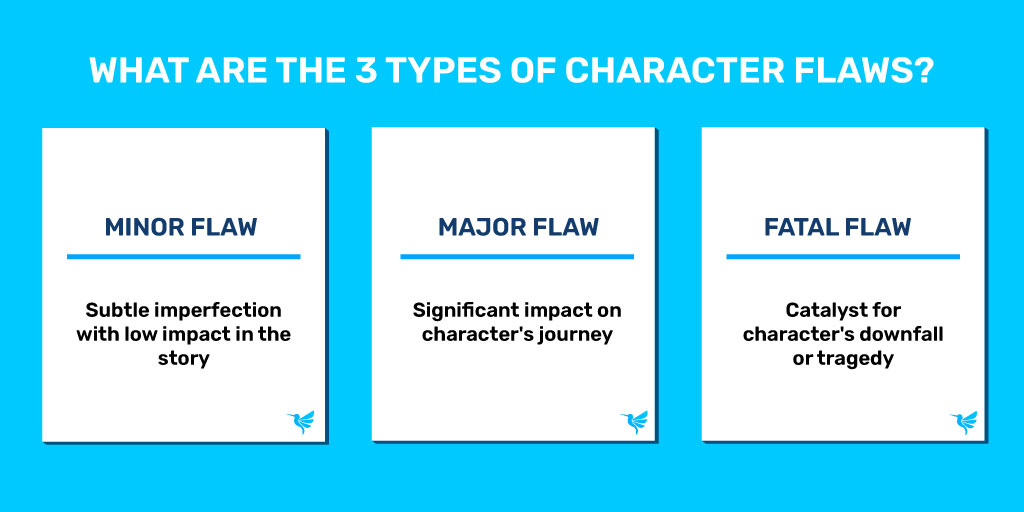
Minor Flaws
Minor flaws are fairly insignificant imperfections that don’t have severe consequences for the character or the overall plot. These might include small vices, quirks, or harmless idiosyncrasies that add depth and realism to the character without significantly altering the story’s trajectory.
They may create moments of humor, provide opportunities for the character to learn something about themselves or the world around them, or serve as relatable traits that humanize them.
Major Flaws
These are more significant imperfections that can have a notable impact on the character’s actions, decisions, and relationships. They often introduce conflicts and obstacles that challenge the character’s progress.
Major flaws might include traits like excessive pride, impulsiveness, stubbornness, or an inability to trust others or themselves. They can drive the character to make poor choices or lead them into difficult situations, forcing them to confront their flaws and undergo personal growth throughout the story.
Fatal Flaws
Fatal flaws are weaknesses that have dire consequences and can ultimately lead to the character’s downfall or a significant turning point in the story. These flaws are deeply ingrained in them and often represent the character’s most significant weakness or blind spot.
Fatal flaws might include traits like greed, hubris, or an obsession that can drive the character towards their own self-destruction or contribute to a tragic outcome. They are typically integral to the story’s central conflict and serve as catalysts for thrilling tension and resolution.
Whether a flaw becomes fatal or remains major usually depends on the way the character handles it, and especially on their ability to learn and grow.
Character Development Quiz (Easy)
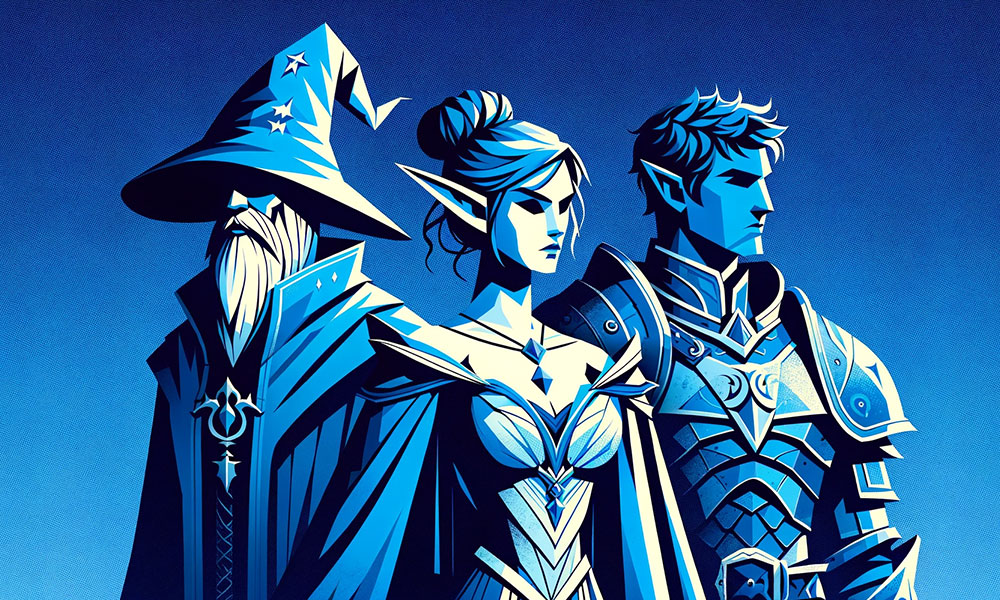
Ultimate List of Character Flaws
If you are looking for inspiration for mastering human imperfections, we have compiled a comprehensive list of character flaws that can breathe authenticity into your characters and help you shape their journeys.
Personality Traits
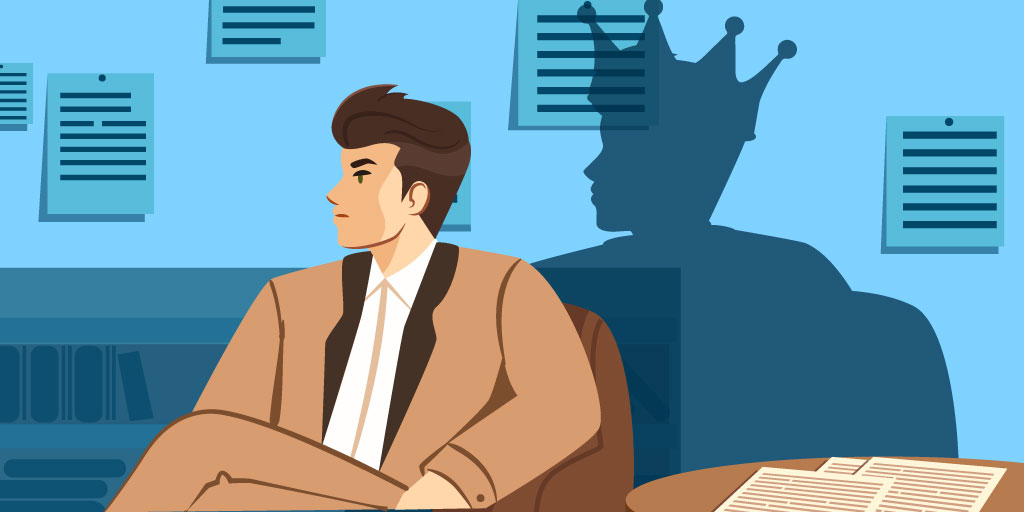
The flaws in this category are ones that arise from a character’s personality traits, such as arrogance, impulsiveness, or stubbornness.
- Arrogant – Excessive pride or self-importance. Example: Draco Malfoy in the Harry Potter series.
- Impulsive – Acting without thinking, often leading to hasty and reckless decisions. Example: Tony Stark in Iron Man.
- Stubborn – Unwilling to change one’s mind or adapt, even in the face of evidence or reason. Example: Elizabeth Bennet in Pride and Prejudice.
- Perfectionist – Obsessed with achieving flawlessness and setting excessively high standards. Example: Miranda Priestly in The Devil Wears Prada.
- Pessimistic – Always expecting the worst outcomes and having a negative outlook on life. Example: Eeyore in Winnie the Pooh.
- Excessive Complaining – Constantly expressing dissatisfaction or negativity about various aspects of life. Example: Larry David in Curb Your Enthusiasm.
- Impatient – Unable to tolerate delays or wait for things, often becoming frustrated easily. Example: Veruca Salt in Charlie and the Chocolate Factory.
- Indecisive – Having difficulty making decisions or being prone to frequent changes of mind. Example: Hamlet in Hamlet.
- Absent-minded – A tendency to be forgetful, distracted, or mentally preoccupied. Example: Jacques Paganel in In Search of the Castaways.
- Lacking Accountability – Avoiding responsibility for one’s actions and refusing to admit mistakes. Example: Joffrey Baratheon in Game of Thrones.
- Shallow – Lacking depth of intellect, knowledge of, and interest in anything beyond the obvious. Example: Harper in Big Little Lies.
- Reckless – Showing a disregard for consequences, often engaging in risky behavior. Example: Jay Gatsby in The Great Gatsby.
- Inflexible – Unwilling to consider alternative perspectives or adapt to changing circumstances. Example: Miss Havisham in Great Expectations.
- Humorless – Showing a lack of appreciation or understanding of humor or lightheartedness. Example: The Devil in The Screwtape Letters.
- Cynical – Distrustful and skeptical of others’ motives, often seeing the negative aspects of situations. Example: Gregory House in House.
- Passive – Being submissive, indecisive, or lacking initiative in taking action. Example: Bella Swan in Twilight.
- Materialistic – Placing excessive importance on wealth, possessions, or material gain. Example: Becky Bloomwood in The Secret Dreamworld of a Shopaholic.
- Naive – Lacking worldly experience or judgment, easily susceptible to manipulation. Example: Forrest Gump in Forrest Gump.
- Aimless – Lacking direction or purpose in life, often drifting without clear goals. Example: Benjamin Braddock in The Graduate.
- Meddlesome – Displaying a strong tendency to interfere in other people’s lives. Example: Mrs. Norris in Mansfield Park.
- Indulgent – Indulging in excessive self-gratification, in desires or vices. Example: Dorian Gray in The Picture of Dorian Gray.
- Timid – Lacking courage or confidence, often hesitant to take risks or assert oneself. Example: Neville Longbottom in the Harry Potter series.
- Lacking Assertiveness – Encountering difficulty expressing oneself confidently or standing up for one’s rights and needs. Example: Cinderella in Cinderella.
- Overambitious – Demonstrating an excessive wish for power or success. Example: Colonel Falkirk in Strangers.
- Chronic Tardiness – Consistently arriving late for appointments, gatherings, or meetings. Example: The White Rabbit in Alice’s Adventures in Wonderland.
- Inconsistent – Displaying a lack of reliability, being unpredictable or unreliable in actions or behaviors. Example: Gollum in The Lord of the Rings.
Emotional Flaws
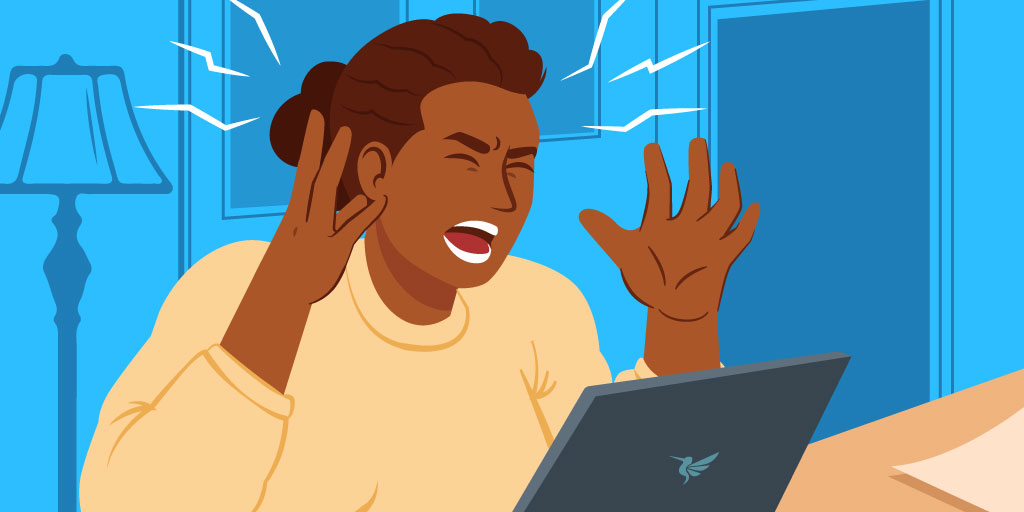
Flaws in this category stem from a character’s emotional state or emotional response patterns, such as insecurity or anger issues.
- Hot-tempered – Easily angered and prone to outbursts of anger. Example: Ron Weasley in the Harry Potter series.
- Nervous – Being easily anxious or apprehensive in various situations. Example: Charlie in The Perks of Being a Wallflower.
- Melancholic – Having a tendency to be excessively sad, gloomy, or depressed. Example: Ophelia in Hamlet.
- Moody – Experiencing frequent and unpredictable changes in mood. Example: Jekyll/Hyde in Strange Case of Dr. Jekyll and Mr. Hyde.
- Vengeful – Holding a deep desire for revenge and being willing to act on it. Example: Count of Monte Cristo in The Count of Monte Cristo.
- Insecure – Lacking self-confidence and constantly doubting oneself. Example: Bridget Jones in Bridget Jones’s Diary.
- Over-sensitive – Being easily hurt or offended by others’ words or actions. Example: Marianne Dashwood in Sense and Sensibility.
- Self-pitying – Excessively indulging in feelings of self-pity, often seeking sympathy or attention. Example: Bella Swan in Twilight.
- Guilt-ridden – Constantly burdened by feelings of guilt, often dwelling on past mistakes. Example: Raskolnikov in Crime and Punishment.
- Inhibited – Restrained or inhibited in expressing emotions or forming deep connections. Example: Christopher Boone in The Curious Incident of the Dog in the Night-Time.
- Melodramatic – Exaggerating emotions and responses for dramatic effect. Example: Blanche DuBois in A Streetcar Named Desire.
- Inappropriately cheerful – Good-humored and sunny in situations in which anger or sadness are more typical. Example: Pollyanna in Pollyanna.
Moral/Ethical Flaws
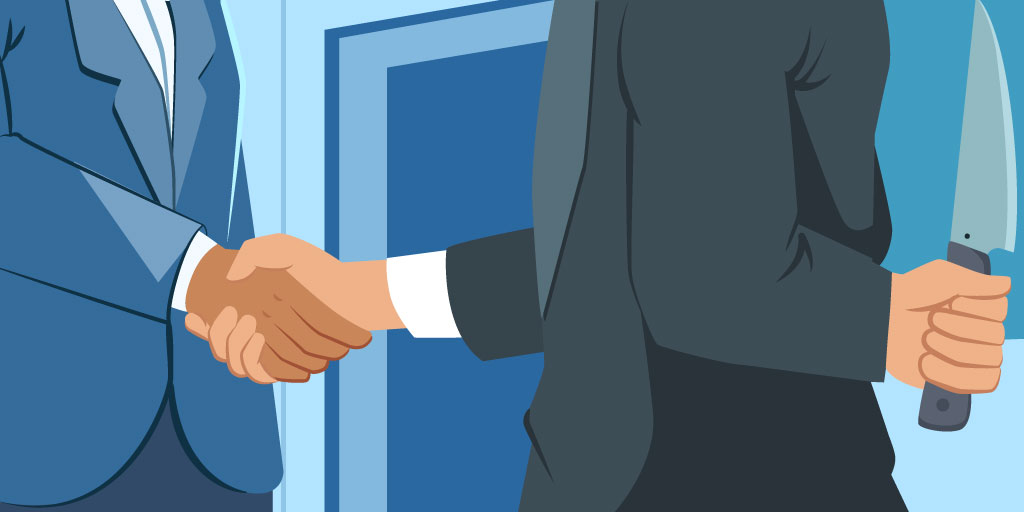
Here, you will find flaws related to a character’s moral compass or ethical principles, such as dishonesty or a lack of empathy.
- Dishonest – Prone to lying or deceiving others for personal gain or to avoid consequences. Example: Tom Ripley in The Talented Mr. Ripley.
- Untrustworthy – Being unreliable or unfaithful in keeping promises or maintaining confidentiality. Example: Gatsby’s associate Meyer Wolfsheim in The Great Gatsby.
- Idealistic – The tendency to be influenced by ideals rather than by practical considerations. Example: Don Quixote in Don Quixote.
- Unreliabile – Neglecting duties, obligations, or commitments, showing a disregard for the consequences of one’s actions. Example: Ignatius J. Reilly in A Confederacy of Dunces.
- Self-righteous – Exhibiting a sense of moral superiority and judgment towards others. Example: The Grand Inquisitor in The Brothers Karamazov.
- Greedy – Excessive desire for wealth, possessions, or power, often at the expense of others. Example: Gordon Gekko in Wall Street.
- Selfish – Prioritizing one’s own needs and desires above the well-being or interests of others. Example: Ebenezer Scrooge in A Christmas Carol.
- Manipulative – Skilled at influencing others for personal gain, often using emotions, deceit, or cunning. Example: Amy Dunne in Gone Girl.
- Exploitative – Taking advantage of others for personal gain or benefit without regard for their well-being. Example: Fagin in Oliver Twist.
- Betraying – Willingly betraying the trust of others for personal gain or advancement. Example: Brutus in Julius Caesar.
- Unprincipled – Having no moral or ethical principles, willing to engage in unethical behavior for personal benefit. Example: Frank Underwood in House of Cards.
- Hypocritical – Claiming to have moral standards or beliefs but behaving in contradiction to those values. Example: Mr. Brocklehurst in Jane Eyre.
- Cruel – Taking pleasure in causing harm or suffering to others. Example: Nurse Ratched in One Flew Over the Cuckoo’s Nest.
- Indifferent – Showing coolness or a lack of concern towards the well-being of others. Example: Tom Buchanan in The Great Gatsby.
- Empathy Lacking – Difficulty understanding or experiencing empathy towards others’ emotions or perspectives. Example: Dexter Morgan in Dexter.
- Dishonorable – Acting in a way that goes against established moral or ethical codes, betraying one’s own principles. Example: Macbeth in Macbeth.
- Hedonistic – Pursuing pleasure and self-indulgence above all else, disregarding moral consequences. Example: Lord Henry Wotton in The Picture of Dorian Gray.
- Coward – Failing to stand up for what is right or backing down from moral challenges out of fear. Example: Friar Lawrence in Romeo and Juliet.
Social/Interpersonal Flaws
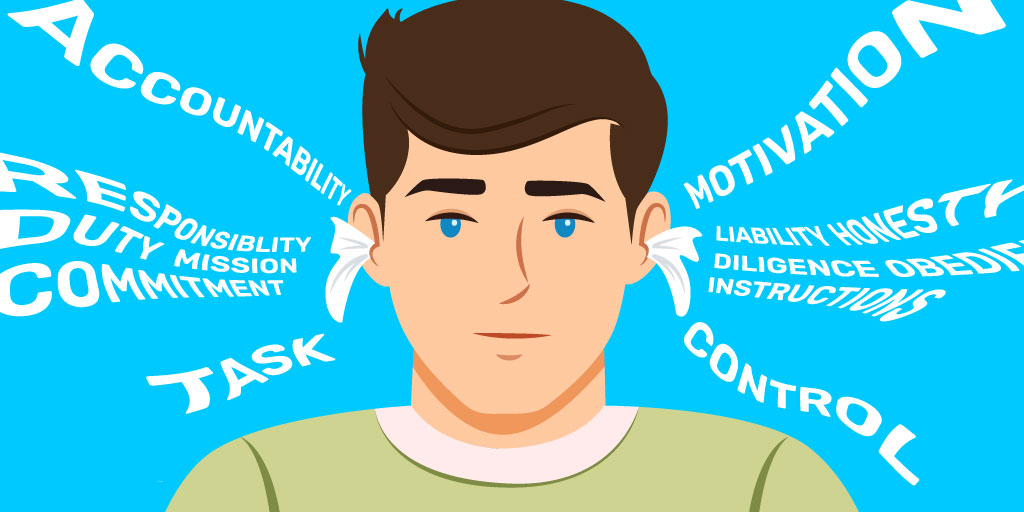
These are flaws that are at the heart of a character’s interactions and relationships with others, such as being socially awkward or overly dependent.
- Socially Awkward – Having difficulty navigating social situations, understanding social cues or norms, or interacting with others smoothly, which often leads to inappropriate behavior. Example: Sheldon Cooper in The Big Bang Theory.
- Reclusive – Preferring isolation and avoiding social interactions or relationships. Example: Boo Radley in To Kill a Mockingbird.
- Aloof – Distant or uninvolved, showing little interest or emotional connection. Example: Sherlock Holmes in Sherlock Holmes.
- Dependent – Relying too heavily on others for company, emotional support, or decision-making. Example: Blanche DuBois in A Streetcar Named Desire.
- Needy – Constantly seeking reassurance, validation, or attention from others. Example: Annie Wilkes in Misery.
- Attention-hogging – Constantly seeking the spotlight and monopolizing conversations or situations. Example: Barney Stinson in How I Met Your Mother.
- Unable to Listen –– Being self-absorbed and not genuinely listening to others during conversations. Example: Sheldon Cooper in The Big Bang Theory.
- Impulsive Interrupting – Frequently cutting off others mid-sentence without allowing them to finish. Example: Perry Cox in Scrubs.
- Gullible – Easily deceived or manipulated due to a tendency to trust others without question. Example: Lennie Small in Of Mice and Men.
- Condescending – Displaying a superior attitude or talking down to others. Example: Miranda Priestly in The Devil Wears Prada.
- Jealous – Envious of others’ achievements, possessions, or relationships. Example: Edmund Pevensie in The Chronicles of Narnia.
- Judgmental – Quick to criticize and form negative opinions about others without sufficient understanding. Example: Mrs. Reed in Jane Eyre.
- Overprotective – Being excessively controlling or overbearing in order to shield others from harm. Example: Mrs. Bennet in Pride and Prejudice.
- Overbearing – Excessively controlling or dominating others, often disregarding their autonomy. Example: Christian Grey in Fifty Shades of Grey.
- Confrontational – Seeking out conflicts or confrontations with others, often provoking unnecessary disputes. Example: Alex DeLarge in A Clockwork Orange.
- Social Climbing – Exploiting relationships or connections for personal advancement or status. Example: Tom Buchanan in The Great Gatsby.
- Unforgiving – Holding grudges and being unwilling to grant forgiveness. Example: Mary Donnelly in Firefly Summer.
- Ungratefulness – Failing to appreciate or acknowledge the kindness or assistance of others. Example: Scrooge in A Christmas Carol.
- Inconsiderate – Showing a lack of thought or regard for the feelings or needs of others. Example: Regina George in Mean Girls.
- Passive-aggressive – Indirectly expressing hostility or anger through subtle, non-confrontational behavior. Example: Emma Woodhouse in Emma.
- Insincere – Acting in a manner that is not genuine or honest, often displaying fake emotions or intentions. Example: Tom Ripley in The Talented Mr. Ripley.
- Lacking Boundaries – Failing to respect personal boundaries, invading others’ privacy or personal space. Example: Mrs. Kravitz in The Bewitched.
- Disruptive – Frequently causing disturbances or disruptions in social settings, intentionally or unintentionally. Example: The Joker in Batman.
- Insensitive Humor – Making jokes or comments that are offensive or hurtful to others. Example: Eric Cartman in South Park.
- Flirtatious – Engaging in excessive or inappropriate flirting behavior, often leading to misunderstandings or conflicts. Example: Joey Tribbiani in Friends.
- Excessive Flattery – Overly praising others insincerely or for personal gain. Example: Gilderoy Lockhart in the Harry Potter series.
- Over-sharing – Disclosing personal or sensitive information inappropriately or excessively. Example: Bridget Jones in Bridget Jones’s Diary.
- Gossipy – Engaging in spreading rumors or sharing personal information about others without their consent. Example: Karen Smith in Mean Girls.
Psychological Flaws
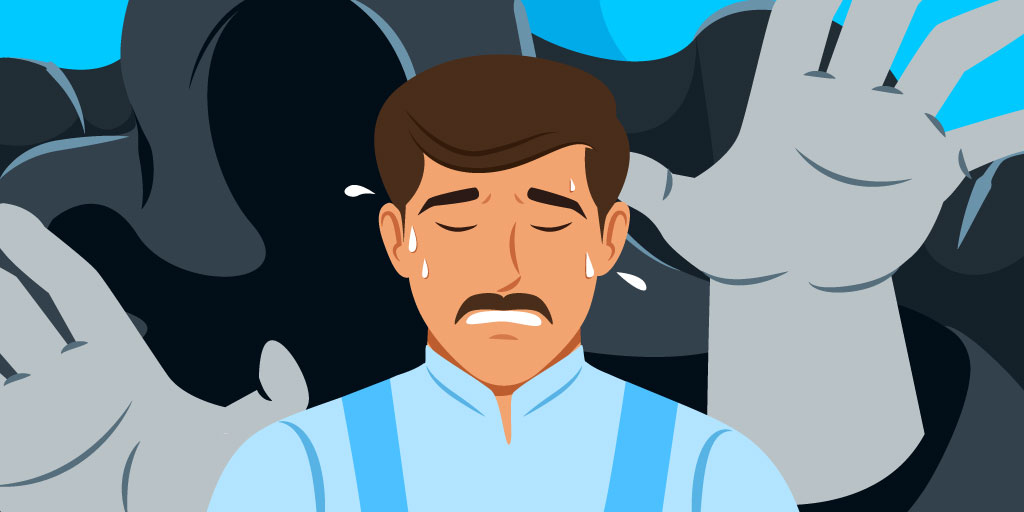
The character flaws in this category go beyond difficult emotions or maladaptive behaviors into problems that either border on mental disorders or can be full-blown psychological diagnoses.
Handle these flaws with care and compassion. They aren’t moral or behavioral failures, but psychological impairments that usually aren’t under a character’s control. In cases like autism spectrum disorder, they shouldn’t be viewed as undesirable characteristics that require change.
Be aware that mental health issues are often misrepresented in the media. To avoid falling into this mistake, make sure you do your own thorough research with reliable sources before adding any of these psychological flaws to your characters, so they are represented fairly and accurately.
- Obsessive – Becoming fixated on certain thoughts, ideas, or desires to an unhealthy extent. Example: Captain Ahab in Moby-Dick.
- Obsessive-Compulsive Disorder – Experiencing intrusive thoughts and engaging in repetitive behaviors to alleviate anxiety. Example: Melvin Udall in As Good as It Gets.
- Borderline Personality Disorder – Intense and unstable emotions, impulsivity, and difficulties in relationships. Example: Susanna Kaysen in Girl, Interrupted.
- Nihilistic – Holding a belief that life is devoid of meaning or value, often leading to apathy or indifference. Example: Meursault in The Stranger.
- Overwhelmed – Easily overwhelmed by emotions or situations, struggling to cope or make decisions. Example: Ophelia in Hamlet.
- Self-sabotaging – Engaging in behaviors that undermine one’s own happiness or success. Example: George in Who’s Afraid of Virginia Woolf?
- Paranoid – Constantly suspicious of others’ motives, fearing betrayal or harm. Example: Catherine Tramell in Basic Instinct.
- Narcissistic – Exaggerated sense of self-importance, excessively self-centered, constantly seeking attention and admiration from others, and lack of empathy. Example: Gaston in Beauty and the Beast.
- Dissociative Identity Disorder – Presence of multiple distinct personalities within one individual. Example: Sybil in Sybil.
- Depression – Persistent feelings of sadness, hopelessness, and loss of interest or pleasure in activities. Example: Esther Greenwood in The Bell Jar.
- Bipolar Disorder – Extreme mood swings, alternating between manic and depressive episodes. Example: Finch in All the Bright Places.
- Social Anxiety Disorder – Intense fear and avoidance of social situations due to fear of judgment or embarrassment. Example: Donnie Darko in Donnie Darko.
- Schizophrenia – Experiencing delusions, hallucinations, and disorganized thinking. Example: Lucia in Everything Here is Beautiful.
- Post-Traumatic Stress Disorder – Experiencing intense psychological distress after a traumatic event. Example: John Rambo in First Blood.
- Oppositional Defiant Disorder – Persistent pattern of disobedient, argumentative, and defiant behavior. Example: Alex Rider in the Alex Rider series.
- Antisocial Personality Disorder – Disregard for the rights of others, lack of empathy, and tendency for manipulative and exploitative behavior. Example: Patrick Bateman in American Psycho.
- Body Dysmorphic Disorder – Obsession with perceived flaws in physical appearance, leading to distress and impaired functioning. Example: Emily in The Duff.
- Eating Disorders (e.g., Anorexia, Bulimia) – Distorted body image and unhealthy relationships with food, leading to harmful eating behaviors. Example: Lia in Wintergirls.
- Body-Focused Repetitive Behavior – Repetitive behaviors that cause damage to one’s body, such as hair pulling or skin picking. Example: Nina Sayers in Black Swan.
- Addiction – Compulsive reliance on substances or behaviors. Example: Thad Beaumont in The Dark Half.
- Sleep Disorders (e.g., Insomnia, Sleep Paralysis) – Persistent difficulties in sleep patterns or disturbances that impact daily functioning. Example: Tyler Durden in Fight Club.
- Impulse Control Disorder – Difficulty controlling impulses, often leading to destructive behaviors. Example: Alex in A Clockwork Orange.
- Amnesia – Memory loss due to trauma or stress, resulting in gaps in recall. Example: Christine in Before I Go to Sleep.
- Autism Spectrum Disorder – Challenges with social communication and interaction, often accompanied by repetitive behaviors or restricted interests. Example: Jacob in House Rules.
- Attention Deficit Hyperactivity Disorder (ADHD) – Difficulty with focus, hyperactivity, and impulsivity. Example: Holden Caulfield in The Catcher in the Rye.
- Hoarding Disorder – Persistent difficulty discarding or parting with possessions, resulting in cluttered living spaces. Example: Collyer brothers in The Hoarders.
- Selective Mutism – Inability to speak in certain social situations, despite being capable of speech. Example: Auggie Pullman in Wonder.
- Imposter Syndrome – Persistent feelings of self-doubt and inadequacy, often accompanied by fear of being exposed as a fraud. Example: Maya in The Secret Life of Bees.
- Erotophobia – Extreme fear or aversion to sexual or romantic relationships or activities. Example: Marianne Dashwood in Sense and Sensibility.
- Erotomania – Delusion of having a romantic relationship with someone who is not reciprocating the feelings, whom the sufferer may not even personally know. Example: Annie Wilkes in Misery.
- Pyromania – An impulsive urge to set fires, often driven by fascination or pleasure. Example: Charlie McGee in Firestarter.
- Stockholm Syndrome – Developing positive feelings or attachment towards a captor or abuser. Example: Belle in Beauty and the Beast.
- Maladaptive Daydreaming – Excessive and immersive daydreaming that interferes with daily functioning and relationships. Example: Walter Mitty in The Secret Life of Walter Mitty.
- Internet or Game Addiction – Excessive and compulsive use of the internet or video games, leading to neglect of real-life responsibilities and relationships. Example: Mae Holland in The Circle.
Physical Flaws

In this category are flaws related to a character’s physical attributes or limitations, such as disabilities and health issues.
Sensitivity is required here too, as physical disabilities should never be treated like negative character features that must be changed. They are character flaws, not because they are undesirable, but because they can interfere with your character’s ability to deal with specific challenges in your story’s plot.
- Albinism – Lack of pigmentation in the skin, hair, and eyes. Example: Griffin in The Invisible Man.
- Scars – Visible marks left on the skin from injuries or surgeries. Example: Harry Potter in the Harry Potter series.
- Skin Conditions (e.g., Psoriasis, Eczema) – Chronic skin conditions characterized by inflammation, redness, or scaling. Example: Wade Wilson/Deadpool in Marvel.
- Facial Deformity – Abnormality or disfigurement of the face. Example: Erik in The Phantom of the Opera.
- Dwarfism – Unusually short stature due to genetic or medical conditions. Example: Tyrion Lannister in A Song of Ice and Fire.
- Altered Height – Unusually tall stature due to genetic conditions or medical treatments. Example: The Outsider in Watchers.
- Cleft Lip/Palate – Congenital facial malformation characterized by a split in the lip or roof of the mouth. Example: Frankenstein’s Monster in Frankenstein.
- Excessive Body Hair – Abundance of body hair in atypical or undesirable areas. Example: Teen Wolf in Teen Wolf.
- Obesity – Excessive body weight beyond the healthy range. Example: Ignatius J. Reilly in A Confederacy of Dunces.
- Uncontrollable Tremors – Involuntary shaking or trembling of the body or limbs. Example: Dr. John Thackery in The Knick.
- Facial Tics – Involuntary, repetitive movements or twitches in facial muscles. Example: Norman Bates in Psycho.
- Color Blindness – A visual impairment that affects the ability to perceive certain colors. Example: John Nash in A Beautiful Mind.
- Blindness – Inability to see or significant visual impairment. Example: Barry in The Zero Game.
- Deafness – Inability to hear or significant hearing impairment. Example: Annie in Annie’s Song.
- Limb Amputation – Loss of one or more limbs. Example: Captain Ahab in Moby-Dick.
- Epilepsy – A neurological disorder characterized by recurrent seizures. Example: Prince Myshkin in The Idiot.
- Tourette Syndrome – A neurological disorder characterized by involuntary tics and vocalizations. Example: Josh in The World’s Strongest Librarian.
- Cystic Fibrosis – A genetic disorder causing severe damage to the lungs and digestive system. Example: Timmy in Daybreak.
- Hemophilia – A disorder that impairs the body’s ability to form blood clots, leading to excessive bleeding. Example: Alexei in Stranger Things.
- Asthma – A respiratory condition characterized by difficulty breathing and narrowed airways. Example: Eddie Kaspbrak in It.
- Diabetes – A chronic condition affecting the body’s ability to regulate blood sugar levels. Example: Oskar Schell in Extremely Loud & Incredibly Close.
- Progeria – A genetic disorder that causes rapid aging and premature aging-related symptoms. Example: Benjamin Button in The Curious Case of Benjamin Button.
- Migraine – Recurring severe headaches often accompanied by other symptoms. Example: Mia in If I Stay.
- Arthritis – Inflammation of the joints causing pain, stiffness, and limited mobility. Example: Grandma Dowdel in A Long Way from Chicago.
- Speech Impediment – Difficulty with speech sounds or fluency, such as stuttering or lisping. Example: Bill Denbrough in It.
- Chronic Pain Syndrome – Persistent and debilitating pain that lasts for an extended period. Example: John Kramer/Jigsaw in the Saw series.
- Allergies – Hypersensitivity to certain substances or environmental factors, resulting in allergic reactions. Example: Charlie in The Perks of Being a Wallflower.
- Leprosy – A chronic infectious disease that affects the skin, nerves, and limbs. Example: Father Damien in Molokai: The Story of Father Damien.
Skill/Ability Flaws
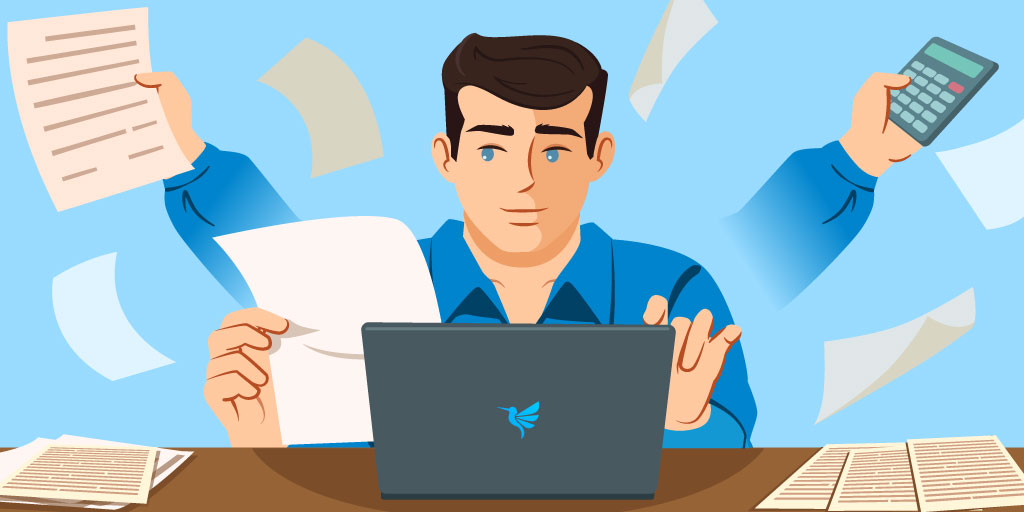
These are flaws that pertain to a character’s skills or abilities, such as incompetence or being easily distracted.
- Inattentive – Easily distracted or not paying proper attention to details or others’ needs. Example: Mr. Bennet in Pride and Prejudice.
- Lack of Focus – Difficulty concentrating or maintaining attention on tasks or goals. Example: Bartleby Gaines in Accepted.
- Overconfident – Possessing an excessive belief in one’s abilities, leading to reckless behavior, or to a disregard for caution or preparation. Example: James Bond in the James Bond series.
- Inflexibility – Resistance to change or difficulty adapting to new situations or ideas. Example: Professor Severus Snape in the Harry Potter series.
- Inaccuracy – Consistent errors or lack of precision in performing tasks or conveying information. Example: Ron Burgundy in Anchorman.
- Poor Communication Skills – Difficulty expressing oneself clearly or effectively, often leading to misunderstandings or miscommunication. Example: Sheldon Cooper in The Big Bang Theory.
- Overthinking – Excessive rumination and overanalyzing situations, leading to indecision and anxiety. Example: Hamlet in Hamlet.
- Lack of Coordination – Poor physical coordination or motor skills, leading to clumsiness or difficulty with tasks requiring physical dexterity. Example: Inspector Jacques Clouseau in The Pink Panther.
- Lack of Creativity – Difficulty generating original or innovative ideas, often relying on others for inspiration or solutions. Example: Dr. John Watson in Sherlock Holmes.
- Over-dependence on Technology – Excessive reliance on technology to perform tasks, leading to a lack of self-sufficiency or adaptability. Example: Captain B. McCrea in Wall-E.
- Lack of Adaptability to Technology – Difficulty learning or utilizing new technologies, hindering progress or professional development. Example: Benny Griessel in the Benny Griessel series.
- Poor Time Management – Difficulty organizing and prioritizing tasks, often leading to procrastination or missed deadlines. Example: Rabbit in Winnie the Pooh.
- Lack of Perseverance – Giving up easily or lacking the drive to persist in the face of challenges or setbacks. Example: Pippin Took in The Lord of the Rings.
- Overcompetitiveness – Excessive focus on winning or outperforming others, often at the expense of healthy collaboration or relationships. Example: Draco Malfoy in the Harry Potter series.
- Poor Judgment – Difficulty making sound judgments or decisions, often resulting in negative consequences. Example: King Lear in King Lear.
- Over-reliance on Intuition – Relying too heavily on gut feelings or instincts without considering logical or rational analysis. Example: Darren Crowe in the Rizzoli & Isles series.
- Poor Leadership Skills – Ineffectiveness in guiding or motivating others, resulting in disorganization or lack of cohesion. Example: Captain Hook in Peter Pan.
- Poor Negotiation Skills – Inability to effectively communicate and compromise during conflicts or discussions, resulting in strained relationships or unresolved issues. Example: Crystal and Spencer in Star.
- Inability to Learn from Mistakes – Repeating the same errors or making similar poor decisions without reflecting or adapting behavior. Example: Charlie Brown in Peanuts.
Cultural/Environmental Flaws

This is a list of flaws influenced by a character’s cultural background, upbringing, or environmental factors, such as prejudice or conformity.
- Ignorance – Lack of knowledge or understanding about other cultures, leading to misunderstandings or insensitivity. Example: Emma Woodhouse in Emma.
- Prejudice –– Holding biased or discriminatory views based on race, gender, religion, or other factors. Example: Tom Ewell in To Kill a Mockingbird.
- Intolerance – Displaying a lack of acceptance or respect for beliefs, opinions, or lifestyles different from one’s own. Example: Dolores Umbridge in the Harry Potter series.
- Zealotry – Fanatical and uncompromising adherence to a belief or ideology, often at the expense of others. Example: Judge Claude Frollo in The Hunchback of Notre Dame.
- Conformity – Blindly adhering to societal norms or expectations without questioning their moral implications. Example: Winston Smith in 1984.
- Environmental Neglect – Disregard for the preservation and protection of the natural environment. Example: Daniel Plainview in There Will Be Blood.
- Disregard for Wildlife – Ignoring or neglecting the welfare and conservation of wildlife species and their habitats. Example: The poachers in Jumanji.
- Impious – Lacking piety and reverence towards gods and their followers. Example: Antony Tavish in I’ve Got Your Number.
- Cultural Relativism – Lack of critical evaluation or questioning of cultural practices or beliefs, leading to the acceptance of harmful or unethical behavior. Example: Assef in The Kite Runner.
- Patriarchal Conditioning – Acceptance and perpetuation of traditional gender roles and power dynamics, hindering gender equality and personal growth. Example: Offred in The Handmaid’s Tale.
- Skepticism – The tendency to habitually doubt or question all generally-accepted ideas. Example: Dusty Rhodes in False Memory.
- Learned Helplessness – A belief that one lacks control over their circumstances due to cultural or environmental conditioning, leading to passivity or dependency. Example: Esther Greenwood in The Bell Jar.
How to Develop Unique Character Flaws
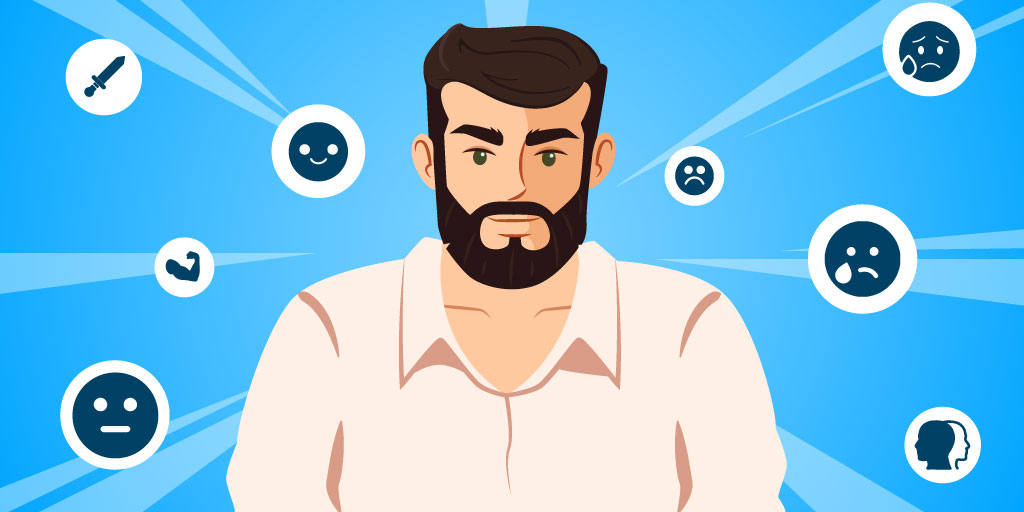
As it is only natural, we, as humans, share some of the same flaws. That’s why there is nothing wrong with using character flaws that other authors have already taken for a test drive, since your character will almost certainly manifest a slightly different version of it as demanded by your plot.
But if you want to create a remarkable character who is uniquely flawed in their own way, you can use the tips below to harness the power of creativity and unlock your characters’ true potential.
1. Consider Backstories
Instead of merely sticking any flaw from a list on a character, consider the ways in which their unique backstories could have shaped their personalities, emotions, abilities, and flaws.
If your character received overprotective parenting as a child, for example, spend some time feeling the claustrophobia of excessive sheltering, the frustration of never being allowed to make your own decisions, and the fear of being alone and independent for the first time. Reflect on your own feelings and on the characteristics, fears, and impairments that might lead from such a backstory.
2. Study Personalities and Emotions
Many organizations and individuals have compiled lists of personality traits, habits, emotions, and phobias that will almost certainly yield good raw material that you can shape into character flaws.
The Berkeley Well-Being Institute and the Massachusetts Institute of Technology have both compiled lists of hundreds of personality traits to start with. Use search engines to find similar lists of habits, emotions, and phobias to use as building blocks for your characters’ unique flaws.
If you can lay your hands on the Diagnostic and Statistical Manual of Mental Disorders (DSM), you can obtain a lot of information about psychological disorders and their causes.
3. Match Flaw with Conflict
If you know which conflict or obstacles your characters will face during your story, come up with flaws that will make it especially difficult or hair-raising for them to overcome those challenges. By doing this, you can use well-established flaws without being boring.
For example, a fear of spiders (arachnophobia) is a minor flaw, until your detective protagonist must crawl through a cave densely populated by black widow spiders to save a kidnap victim.
4. Reflect on Moral Codes
Think of the ways in which moral codes can deviate from the norm, and then create a character with an unconventional moral system. This can lead to ethical dilemmas and poor decisions.
For example, a belief that everyone is entitled to the fruits of their labor can give rise to stinginess, or a belief that animal lives are as important as human lives can result in the destruction of medical laboratories conducting essential cancer research.
5. Contrast Opposing Traits
Contrasting personality traits can form a character flaw by creating internal conflicts and contradictions within a character. When opposing traits exist within an individual, they can lead to internal struggles and hinder their ability to function effectively or make sound decisions.
One example of this is a character torn between a strong sense of personal ambition and a deep commitment to helping others. This contrasting combination can result in a flaw of being perpetually miserable or unhappy with life.
6. Explore Obsessions or Fixations
Any obsession or fixation can become a flaw when it drives a character’s behavior and causes them to neglect other aspects of their lives. Think of vengeance, beauty, achievement, orderliness, a search for truth, or anything else with which your character can become obsessed.
7. Subvert Expectations
Take a common trope or archetype and give it a twist by adding unexpected flaws that challenge traditional character portrayals.
For example, rather than portraying a wise mentor with all the answers, create a mentor who is plagued by chronic forgetfulness or memory loss. Their flaw of forgetfulness challenges their ability to guide and teach effectively, forcing them to find alternative ways to impart wisdom or rely on others for assistance.
8. Incorporate External Influences
Consider how societal, cultural, or environmental factors shape a character’s flaws, reflecting the world they inhabit.
Living in an environment of economic inequality and scarcity may contribute to a flaw of greed or an obsessive focus on material wealth, whilst living in an area with significant environmental pollution can result in a flaw of chronic health problems or susceptibility to illness.
9. Use Flaws as Defense Mechanisms
Develop flaws that serve as coping mechanisms or defense mechanisms for deeper emotional wounds or vulnerabilities.
For example, a character who uses humor excessively or inappropriately may do so as a defense mechanism to deflect or mask their own emotional pain.
How to Write Character Flaws in a Story
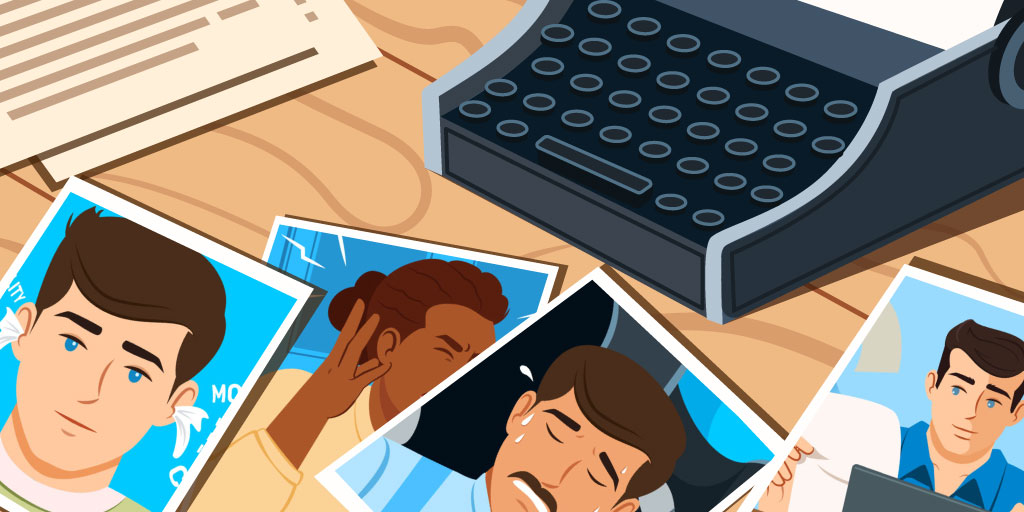
Adding chosen character flaws properly to a story involves careful consideration and effective integration. Here are steps to help you incorporate character flaws effectively:
1. Show Flaws in Action
Instead of describing the flaws, demonstrate them through character actions, decisions, and behaviors.
If Sarah is impulsive, show her coming across an online money-making advertisement, and let your readers watch her as she immediately transfers a significant portion of her savings to the account. Let her make impulsive purchases and give huge gifts.
2. Create Internal Conflict
Highlight the internal conflicts arising from the character’s flaws. Explore their struggles, doubts, and the emotional toll these flaws take on their psyche. Show how their internal conflicts arise from the clash between their flawed impulses and their deeper aspirations or moral compass.
For example, Ben feels torn between his perfectionist tendencies and the need to get the job done quickly. He battles with feelings of guilt and regret, as his high expectations not only affect his own life but also strain his relationships with loved ones. He wrestles with the emotional burden of knowing that his demands have caused harm and disappointment to those around him.
3. Reflect External Consequences
Illustrate the external consequences of the character’s flaws, showing how they affect other characters, plot developments, and the overall story. Consequences can include damaged relationships, missed opportunities, financial or legal problems, isolation from others, or professional setbacks.
For example, due to his excessive pride and reluctance to seek help, a talented musician misses out on a potentially career-changing opportunity because he refuses to collaborate with others or take constructive criticism.
4. Build Reader Empathy
Incorporate moments that evoke reader empathy and understanding for the character’s flaws. Offer glimpses into their vulnerabilities, fears, or past experiences that shed light on the roots of their flawed behavior.
You can do this through flashbacks to the events that gave rise to their flaws, via confiding conversations with friends, or by expressions of remorse or regret for the negative consequences of their flawed actions.
5. Highlight the Flaw’s Strength
Explore how the character’s flaws can sometimes be their greatest strengths in disguise or how they can be channeled in productive ways. This adds layers to their character and demonstrates the potential for growth and redemption.
For example, a stubborn character’s refusal to quit allows them to achieve extraordinary feats and overcome seemingly insurmountable challenges. On the other hand, a character’s habit of overthinking allows them to consider multiple perspectives and anticipate potential pitfalls, making them an invaluable asset in complex problem-solving scenarios.
6. Support Story Themes
Ensure that the character flaws contribute to the exploration of story themes. Connect the flaws to larger ideas and allow them to serve as vehicles for deeper messages.
For example, a character with a history of lying and manipulation is eventually exposed, facing rejection and isolation. Through the empathy and understanding of others, they are given a chance at redemption, highlighting the theme of empathy and the potential for growth and forgiveness.
Final Thoughts
Flaws breathe life and authenticity into characters. Through their weaknesses we discover their struggles, triumphs, and journeys of self-discovery, reminding us that within our own imperfections lie the potential for growth, redemption, and the power to connect with others on a deeply emotional level. Embrace the flaws in your characters, for it is within those cracks that the most beautiful and relatable stories unfold.
Character Development Quiz (Hard)








